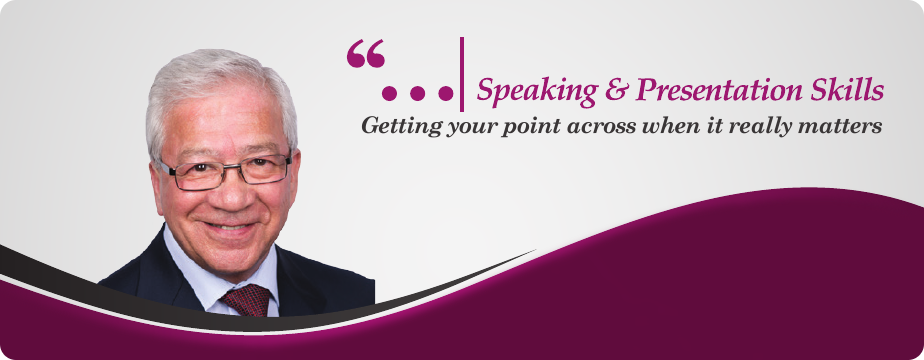Spoken Word
| MODULES | OUTCOMES |
|---|---|
| Elevator Speech | |
|
|
| Sequence of Persuasion | |
|
|
| Use of Structure | |
|
|
| Impromptu Speaking / Q&A | |
|
|
| Delivering a speech or presentation | |
|
|
| Speaking to the media | |
|
|
| Platform presence | |
|
|
| Improving the way you sound | |
|
|
| Effective use of visual aids | |
|
|
| Understanding Body Language | |
|
|
| Making your mark in meetings | |
|
|
| Overcoming fear of Public Speaking | |
|
|
| Communicating more effectively | |
|
|
| Crisis Management | |
|
|
Get in touch
enquiries: +353 (0)89 611 7427
alternative: +44 (0)7768 696254
email: phillip@speakingandpresentationskills.com
